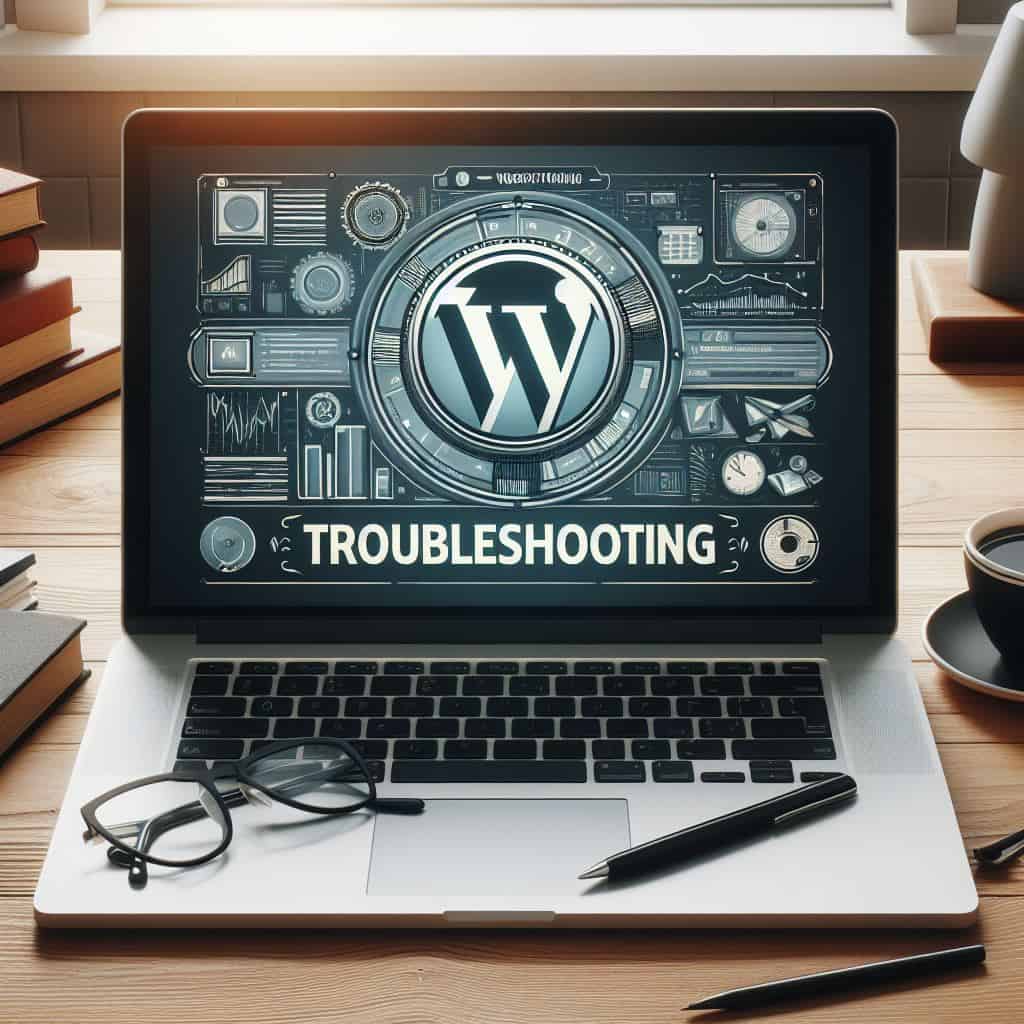
Migrating a WordPress site can feel overwhelming, but trust me, it doesn’t have to be. I’ve seen people lose critical data or face hours of downtime simply because they skipped a proper backup. Can you imagine moving your site to a new server only to find broken links or missing media files?
Frustrating, right? That’s why I always recommend creating a full backup and restore WordPress site to new server before starting. It’s like having a safety net for your website.
Some common challenges during migration include database connection errors, SSL certificate issues, and even SEO problems caused by broken permalinks. These can disrupt your site’s functionality and user experience. But with the right tools and a clear plan, you can avoid these headaches and ensure a smooth transition.
Let’s get started!
- Why You Should Back Up and Restore Your WordPress Site to a New Server
- What You Need to Back Up and Restore a WordPress Site
- How to Back Up a WordPress Site
- Setting Up the New Server for Your WordPress Site
- How to Restore and Test Your WordPress Site on a New Server
- Best Practices for Backing Up and Migrating WordPress
- Potential Challenges and Common Mistakes to Avoid
- FAQ
Why You Should Back Up and Restore Your WordPress Site to a New Server
There are plenty of reasons why someone might move their WordPress site to a new server. One big reason is switching hosting providers. Maybe your current host has outdated hardware or slow speeds, or you’re just tired of poor customer service.
I’ve seen people migrate because their site outgrew the server’s limits, like low CPU or RAM, and they needed something more powerful.
Another common reason? Redesigning a site. A fresh look might require a new hosting setup or domain. Whatever the reason, migrating can improve performance, reduce costs, and give you better support.
Risks of Not Backing Up Your WordPress Website
Skipping a backup before migration is like walking a tightrope without a safety net. You could lose your data, content, or even the entire site if something goes wrong.
Imagine accidentally deleting files or breaking your database during the move. That could hurt your SEO rankings and user experience. I always recommend using a reliable backup plugin, like Duplicator, to create a full copy of your site.
This way, you’ll have a recovery plan if things go sideways. Trust me, it’s better to be safe than sorry.
Benefits of Regular Backups
Regular backups are a lifesaver. They protect your site from data loss caused by accidental deletions, cyberattacks, or even server failures. If your site ever gets hacked, a backup lets you restore everything to a clean state quickly.
Maintaining a backup schedule ensures you have a recent copy of your site ready to go. This minimizes downtime and keeps your visitors happy.
I’ve also found that independent backups are a great safety net if your hosting provider fails. It’s all about peace of mind and being prepared for the unexpected.
What You Need to Back Up and Restore a WordPress Site
Essential Tools and Plugins
When backing up and restoring your WordPress site, having the right tools makes all the difference. I’ve tried several plugins over the years, and a few stand out for their reliability and ease of use. Here are some of my top picks:
-
UpdraftPlus: This plugin is a powerhouse with over 3 million active installations. It offers complete backups, cloud storage options, and even scheduled backups.
-
Duplicator: Perfect for migrations, Duplicator creates a single archive file of your site, making it easy to move everything in one go.
-
BlogVault: If you want daily backups and unlimited storage, BlogVault is a solid choice. It even has its independent dashboard for managing backups.
-
BackupBuddy: Known for its migration features, BackupBuddy is great but can be pricey.
-
Jetpack VaultPress Backup: This plugin integrates with Jetpack and provides automated backups, though it’s part of a subscription plan.
Each of these plugins has its strengths, so pick one that fits your needs. I lean toward UpdraftPlus for its user-friendly interface and robust features.
Access to Hosting Accounts and Credentials
Before you start the migration process, gather all the necessary credentials. Trust me, having everything ready saves a ton of time and frustration.
Here’s what you’ll need:
-
Hosting Account Access: Log in to your hosting provider’s control panel (like cPanel or Plesk).
-
Domain Management: Link your domain to the new hosting account.
-
DNS Settings: Update your DNS to point to the new server. Keep in mind this can take up to 48 hours to propagate.
-
Database Details: Create a new database and user on the new server. Write down the credentials—you’ll need them later.
-
FTP Access: Ensure you have FTP login details for both the old and new servers.
Having these details at your fingertips ensures a smoother migration process.
Preparing a Migration Checklist
A migration checklist is your roadmap to success. I always create one to stay organized and avoid missing critical steps. Here’s what I include:
-
Backup Your Website: Create a WordPress site backup before doing anything else.
-
Update WordPress Core, Themes, and Plugins: Ensure everything is up to date to avoid compatibility issues.
-
Test Current Performance: Check your site’s speed and functionality to compare it after migration.
-
Export Your Database: Save a copy of your database for the migration.
-
Prepare the New Hosting Environment: Ensure the new server meets WordPress requirements, including PHP version and server compatibility.
-
SSL Certificates: If you’re using HTTPS, prepare your SSL certificates for the new server.
-
Staging Site Testing: If possible, test the migration on a staging site to catch any issues before going live.
This checklist keeps everything on track and reduces the risk of downtime or data loss.
How to Back Up a WordPress Site
Using a Backup Plugin
Using a WordPress backup plugin is the easiest way to create a backup of your entire WordPress site. I’ve used several plugins, and they save so much time compared to manual methods. These tools automate the process, reducing the chances of human error.
Plus, many plugins offer scheduling options, so you can set backups to run daily, weekly, or even in real time. This ensures your site is always protected without you lifting a finger.
I recommend plugins like UpdraftPlus or Duplicator: they let you customize what to back up. You can include only essential files or create a complete backup of your site. Some plugins even offer one-click restore options, making restoration a breeze if something goes wrong.
Trust me, these tools are lifesavers when you need to back up and restore your WordPress site to a new server.
Manual Backup Process
You can manually back up your WordPress site if you prefer a hands-on approach. It takes a bit more effort, but it’s a reliable method. Here’s a step-by-step guide to help you:
-
Connect to your site using an FTP client like FileZilla.
-
Download all your site’s files, including core files, themes, plugins, and media, to your computer.
-
Access your database through phpMyAdmin in your hosting control panel.
-
Export the database and save it locally.
Don’t forget to back up your media files from the wp-content/uploads directory. Once you’ve downloaded everything, store the files securely. This method gives you full control over the backup process but is more time-consuming than a plugin.
Verifying and Storing Your Backup
After creating a backup, always verify it to ensure it’s complete and functional. I’ve learned the hard way that skipping this step can lead to headaches later. Open the files and check that everything is intact. If you’re using a plugin, test the backup by restoring it on a staging site.
For storage, I recommend keeping backups in multiple locations. Cloud storage services like Google Drive or Dropbox can be used for easy access. Save a copy on your computer or an external hard drive for quick retrieval. For added security, consider offsite backup services like VaultPress.
Always secure your backups with a password and keep older versions if you need to roll back changes.
Following these steps ensures your WordPress site is safe and ready for restoration whenever needed. Whether you use a plugin or go manual, the key is to create a backup and store it securely.
Setting Up the New Server for Your WordPress Site
Preparing the Hosting Environment
Getting your new hosting environment ready is the first step in site migration. I always check a few key things to ensure the server can handle my WordPress site without hiccups. Here’s what I look for:
-
Performance and Speed: A fast server with high uptime is essential. It keeps your site running smoothly and ensures visitors don’t bounce due to slow loading times.
-
Security Features: Look for SSL certificates, firewalls, malware scanning, and automatic backups. These features protect your site from threats and help with disaster recovery.
-
Customer Support: I prefer hosting providers with 24/7 support. It’s a lifesaver if something goes wrong during migration.
Also, ensure the server supports the required PHP version and configurations for WordPress. Without this, plugins or themes might not work properly.
Creating a New Database
Once the hosting environment is ready, it’s time to set up a new database. This step is crucial because WordPress stores all your site’s content and settings in the database. Here’s how I do it:
-
Log into the hosting control panel (like cPanel) or phpMyAdmin.
-
Go to the “Databases” tab and create a new database. Give it a name you’ll remember.
-
Set up a user account for the database. Create a strong password and grant the user full permissions.
-
Alternatively, use the “MySQL Database Wizard” in cPanel. It guides you through creating a database and user step by step.
Keep the database name, username, and password handy. You’ll need them when configuring WordPress.
Configuring WordPress on the New Server
Now comes the exciting part—getting WordPress up and running on the new server. Follow these steps to configure it:
-
Access phpMyAdmin on the new host and select your database.
-
Import the SQL file from your backup. Verify the import to ensure everything transferred correctly.
-
Connect to the new server via FTP and upload your WordPress files to the appropriate directory.
-
Update the
wp-config.phpfile with the new database credentials. This connects WordPress to the database. -
Update your DNS settings to point to the new server. This step might take up to 48 hours to propagate.
Once everything is set, test your site to ensure it’s working as expected. If you spot any issues, troubleshoot them before going live.
Setting up the new server might seem daunting, but taking it step by step makes it manageable. With a complete backup and the right tools, moving your website to a new hosting provider becomes a smooth process.
How to Restore and Test Your WordPress Site on a New Server
Restoring Using a Plugin
Restoring your WordPress site with a plugin is the easiest and most reliable method. I always recommend this approach, especially if you’re uncomfortable with manual processes. Plugins like UpdraftPlus or Duplicator simplify the entire restoration process. They automate tasks that would otherwise take hours and reduce the chances of errors. Here’s how you can restore your site using a plugin:
-
Install the same plugin you used for the backup on your new server.
-
Upload the backup file to the plugin’s interface.
-
Follow the on-screen instructions to restore your site. Most plugins offer a one-click restore option, making it incredibly straightforward.
Plugins also come with added features like scheduled backups and disaster recovery options. These tools ensure you can restore WordPress from a backup without any hassle. They’re a lifesaver when you need to quickly get your site back online.
Manual Restoration Process
You can manually restore your WordPress site if you prefer a hands-on approach. This method requires more effort but gives you complete control. Here’s what I do when restoring manually:
-
Use an FTP client to upload your WordPress files to the new server.
-
Import your database backup through phpMyAdmin.
-
Update the
wp-config.phpfile with the new database credentials.
While this method works, it’s not without challenges. Missing files or database entries can break your site. You might also face downtime or issues like broken links and missing media files. Always double-check your backup to ensure it’s complete before starting the restoration.
Testing and Troubleshooting After Migration
Once you’ve restored your site, it’s time to test everything. I always browse different pages to check for broken links or missing images. Testing forms and search functionality is equally important. Here’s a quick checklist to guide you:
-
Verify that all media files load correctly.
-
Ensure plugins and themes function as expected.
-
Use tools like Google PageSpeed Insights to analyze performance.
If you encounter issues, don’t panic. Start by checking your database credentials in the wp-config.php file. Resetting permalinks or reinstalling the SSL certificate can also resolve common problems. Testing on a staging site before going live helps catch errors early, saving you from headaches later.
Restoring and testing your WordPress site might seem daunting, but with the right tools and steps, it’s manageable. Whether you use a plugin or go manual, the key is to stay organized and thorough.
Best Practices for Backing Up and Migrating WordPress
Automating Backups and Scheduling
Automating backups is one of the smartest things you can do for your WordPress site. I’ve seen too many people lose their data because they forgot to back up manually. Automation takes that worry off your plate. Once you set it up, backups run in the background without you lifting a finger. Here’s why I recommend automating and scheduling backups:
-
You’ll always have a recent copy of your site ready to restore.
-
It minimizes downtime, keeping your visitors happy.
-
Automation ensures consistency, so you’re never caught off guard.
-
It saves time and reduces human error.
Think of it as a safety net that works 24/7. If something goes wrong, like a hack or server crash, you can restore your site quickly and return to business. Regular backups give you peace of mind, knowing your hard work is protected.
Testing Backups Before Migration
Testing your backups before a site migration is a step you can’t skip. I’ve learned this the hard way. Imagine thinking your backup is fine, only to find out it’s incomplete when needed. Here’s a step-by-step guide to test your backup:
-
Confirm that all your data is backed up and can be restored.
-
Use a staging site to test the restoration process.
-
Check for any errors or missing files during the test.
-
Verify that your backup methods are working as expected.
Testing ensures your backup is reliable and ready for action. Tools like BlogVault make this process easier by letting you test backups on a staging site. It’s better to catch issues now than during the actual migration.
Keeping Your WordPress Site Updated
Keeping your WordPress site updated is important, especially during and after migration. Updates ensure compatibility with the latest plugins and themes, reducing the risk of errors. They also patch vulnerabilities, keeping your site secure from hackers.
Before starting a migration, I always update WordPress core, plugins, and themes. This helps avoid compatibility issues and ensures a smoother process.
Regular updates also keep your site running efficiently. Outdated software can slow down your site or cause unexpected crashes. Staying updated is a simple way to maintain your site’s performance and security.
Think of updates as routine maintenance for your website. They might seem small, but they make a big difference in keeping everything running smoothly.
Potential Challenges and Common Mistakes to Avoid
Challenges During Migration
Migrating a WordPress site can feel like walking a tightrope. Even with preparation, unexpected challenges can pop up. One common issue is database connection errors. These happen when the database credentials in the wp-config.php file don’t match the new server’s settings.
I’ve also seen problems with file permissions. If your files don’t have the right permissions, your site might not load properly.
Another challenge? Broken links and missing media files. These often occur when URLs aren’t updated to reflect the new server’s domain. It’s frustrating to see images missing or links leading to 404 errors. SSL certificate issues can also cause headaches.
If your site uses HTTPS, you’ll need to reinstall or reconfigure the SSL certificate on the new server.
Lastly, DNS propagation delays can test your patience. After updating your DNS settings, it can take up to 48 hours for the changes to take effect. During this time, your site might appear offline to some users. Staying calm and double-checking each step can help you tackle these challenges.
Mistakes to Avoid When Backing Up and Restoring
I’ve noticed some common mistakes people make during backups and restorations. The first is not backing up your site regularly. Skipping this step leaves you vulnerable to data loss if something goes wrong.
Another mistake is relying solely on your hosting provider for backups. While many hosts offer backup services, they might not be as comprehensive or accessible as you’d like.
Deleting important files without realizing their significance is another pitfall. For example, accidentally removing the wp-config.php file can break your site. Always double-check before deleting anything.
When restoring, some people forget to test their backups. This can lead to incomplete restorations or missing data. I always recommend testing backups on a staging site to ensure they’re functional. Finally, skipping updates before migration can cause compatibility issues.
Outdated plugins or themes might not work on the new server, leading to errors.
Avoiding these mistakes can save you time and stress. A little extra care during the backup and restoration process goes a long way in protecting your WordPress site.
FAQ
What is the easiest way to back up my WordPress site?
Using a backup plugin like UpdraftPlus is the simplest method. It automates the process and lets you schedule backups. You can save your files to cloud storage or download them locally. This ensures your WordPress site data loss is never a concern.
How do I test my site after migration?
Testing involves checking all pages, links, and media files. Use tools like Google PageSpeed Insights to analyze performance. Don’t forget to test forms and plugins. If something doesn’t work, troubleshoot immediately to ensure a smooth recovery.
Can I migrate my site without downtime?
Yes, you can! Use a staging site to test everything before going live. Once you’re confident, update your DNS settings during low-traffic hours. This minimizes downtime and ensures a seamless transition.
What should I do if my backup fails during restoration?
First, don’t panic. Check if the backup file is complete. If you used a plugin, contact their support team. For manual backups, verify the database and files. Testing backups beforehand helps avoid this issue and speeds up recovery.
How often should I back up my WordPress site?
I recommend weekly backups for most sites. If you update content daily, consider daily backups. Regular backups protect your site from unexpected issues like hacks or server crashes, ensuring quick recovery when needed.



